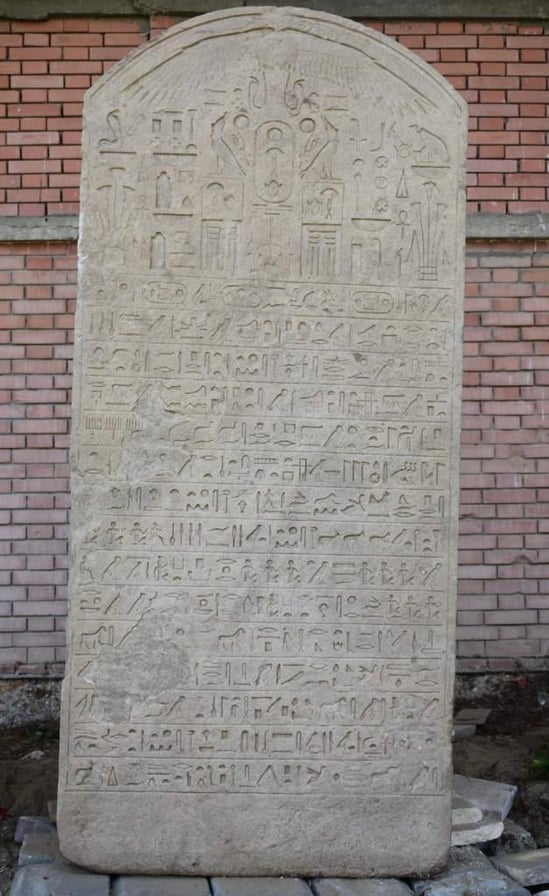CAIRO – 6 June 2021 Egypt’s Ministry of Tourism and Antiquities recently found an ancient sandstone stela inside a plot of land for a citizen in Ismailia.

The citizen immediately informed the Tourism and Antiquities Police of the presence of an ancient stela while he was reclaiming and preparing his land for cultivation.
The stela is 230 cm long, 103 cm wide, and 45 cm in diameter. It is made of sandstone and is topped with a winged sun disk engraved with a cartouche of King Apries, the fifth king of the 26th Dynasty. The rock also contains 15 lines of hieroglyphs.
King Apries is one of the great kings who ruled Egypt during the Twenty-Sixth Dynasty, as he had a prominent and effective role in Egypt's political history abroad, in addition to serious internal political transformations.
The first act that King Apries did when ascending the throne, was the restoration of Syria and Palestine, in order to fulfill the old hopes of his family to restore the colonies of Egypt there.
It is necessary to differentiate between him and King Psamtik I, who bore the same name. Apries came to power after the death of his father, King Psamtik II, and continued to rule the country for an uncertain period according to historians as well as archaeologists.
He was identified through Herodotus' sayings about him, and through what the Torah mentioned about him, and through some of his few traces in Lower Egypt.
Despite the ambiguity of the biography of King Aries and his few traces, traces of him were found by chance several times.
Comments
Leave a Comment